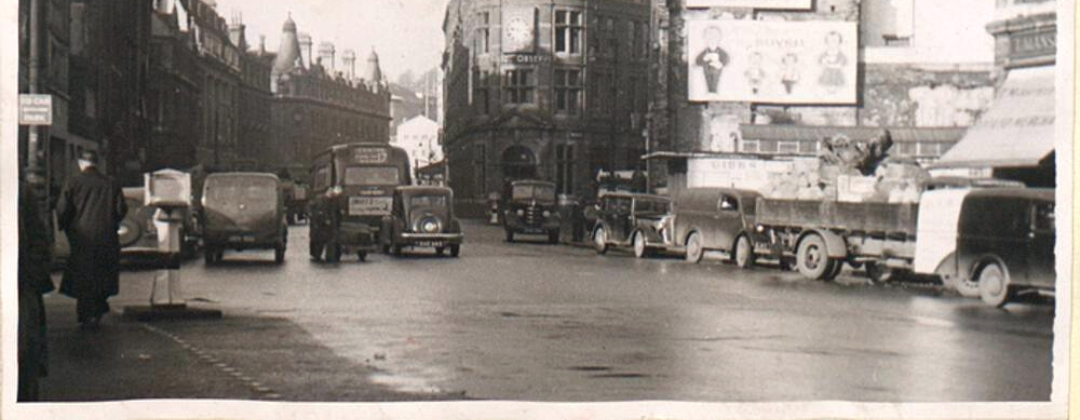The history of litter

A brief history of litter
When our great grandparents were young there was virtually no litter. These days, the country is carpeted in it. In this blog, we’re taking a look at the history of litter.
1950’s
It’s no coincidence that litter was first seen as a national problem in the mid-1950s, just as our domestic manufacturing industry began to bounce back after the Second World War. The mass production of disposable goods also produced a growing mountain of waste.
In 1957, The Times newspaper complained about ‘litter by the tonne’. In 1958, we had the first Litter Act. Mass consumerism was an unstoppable trend, and so it seemed, was litter.
1970’s
By the 1970s, disposable products were intrinsic to our daily lives. Littering had become a widely accepted social norm because there were no good means of dealing with huge volumes of widely dispersed waste.
In an attempt to tackle the issue, the 1971 Dangerous Litter Act set the maximum fine for dropping litter to £100.
1990’s
In 1990, the Environmental Protection Act set out the duties of landowners and occupiers. It also defined acceptable standards of street cleanliness for the first time.
Modern day
Today Britain’s top litter items are cigarette stubs, sweet wrappers, drinks bottles, food packaging, paper tissues and plastic bags. These are all products designed to be single-use and disposable.
We’re consuming more too, generating more waste and continually growing the scale of the challenge. We each generate on average over 400kg of waste every year. It’s therefore unlikely that projects that just focus on managing the consequence of our actions would be effective, affordable or ultimately even desirable. To fix the litter problem we need to generate less waste in the first place.
And there’s another nasty modern catch. Almost all of these items, and many other common types of litter, are made of plastic.
The problem with plastic
Plastic typically takes around 400 years to decay. Even if it’s recycled, all plastic is destined in the long term to break down into fine plastic dust which will drift around our planet. There is estimated to be five trillion pieces of plastic floating in the oceans. Plastic is ubiquitous we’re even eating it in seafood!
The plastics industry is worth $300 billion dollars worldwide. The packaging industry is the single biggest market for new plastic and over the past decade demand for plastic has grown by over 30% to 300 million tonnes per year.
Plastic waste is the 21st century’s biggest environmental pollutant and the pressure for us to consume ever more seems overwhelming.
Does everyone litter?
Today, litter is treated as both a social and a waste management problem. There is a social stigma attached to littering, but even now, six out of 10 people admit to doing it.
The average person holds a piece of litter for 12 steps before dropping it. So if they don’t find a litter bin within about thirty feet, chances are it lands on the street.
We know that if there is already litter on the street, other people are more likely to drop litter of their own.
That’s why our crews work every day of the year. Last year (2016), Bristol Waste Company cleaned 3,700 tonnes of waste from our streets! Across England, 30 million tonnes was swept up – enough to fill Wembley Stadium four times over – at a cost of nearly £850 million.
So if you’ve ever been tempted to drop a cigarette butt or crisp packet, remember that it could lead to dozens of other pieces of litter being dropped in the same place. Your actions have the power to change a street for the better, or worse.
Keeping Britain tidy
Litter strewn streets are now such an everyday part of life, which makes it surprising to discover that ‘Keep Britain Tidy’ is an idea that started 65 years ago. A key moment in the history of litter is the first great national clean-up. This took place in 1951 for The Festival of Britain, followed by another in 1953 for The Queen’s Coronation.
Six decades later, Keep Britain Tidy organised a third great national litter pick, Clean for the Queen, as part of the Queen’s 90th birthday celebrations. A quarter of a million people collected 300,000 bags of rubbish, enough litter to stretch from Land’s End to John O’Groats!
So what’s the solution?
As individuals we need to decide what kind of city we want to live in. Being realistic, the local services that manage waste, in common with many other services, are increasingly pressured for resources.
Our objective is to work with residents to make our city cleaner and greener for everyone. If people’s actions towards litter and waste are informed by a greater understanding of the scale and consequences of their impact – social, environmental and financial – we provide the basis for more effective collaboration. This is the essence of Bristol Clean Streets. This is the shared vision of residents and services about the city we’d like to live in, delivered in partnership.
Over the last decade, we can already see an example of such behaviour change in recycling. In 2016, Bristolians sent four million kilos of plastic to be recycled. Since 2004, the total amount of waste we generate has gone down year-on-year and the amount recycled has gone up. Currently, 40% of the UK’s 466 million tonnes of annual waste is recycled.
It is worth noting that it’s much harder to recover recyclable material from street waste, even when correctly disposed of in bins. Ideally, we’d all take our rubbish home and then recycle it from there.
Together, we can make litter history.
